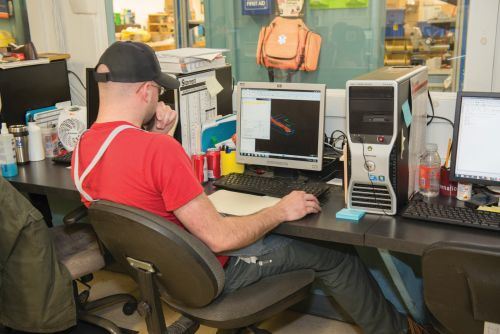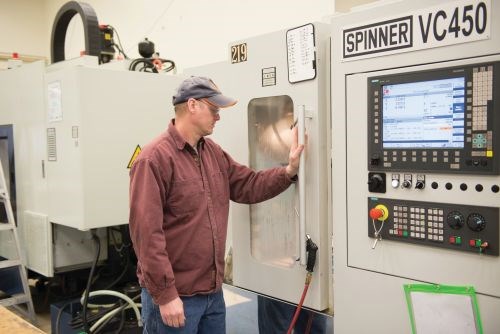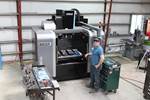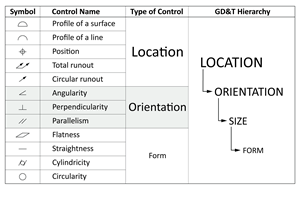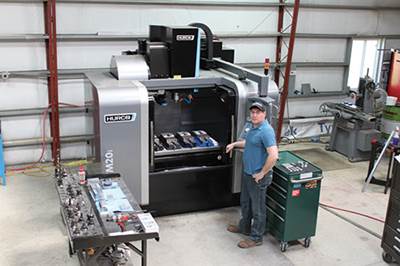CAM Can Help You Do More with Less
One moldmaker makes significant advances in programming and machining productivity while reducing cutting tool costs.
At any given time during a 24-hour workday, moldmakers at Harbec Inc. can be found sitting elbow to elbow in a “CAM room” crammed with 16 computers equipped with Mastercam CAM software from CNC Software Inc., writing CNC pro-grams to manufacture mold plates for current jobs. Meanwhile, the 36 three-, four- and five-axis mills, lathes and EDMs for which they are responsible are churning out components that will be used by other moldmakers to assemble their molds.
Harbec is a vertically integrated company with three core profit centers: CNC manufacturing of 3D prototype parts, design and manufacture of molds and injection-molded prototypes, and production molding. Half of the company’s income is derived from molding, and the other half from the manufacture of precision prototypes and tooling.
Harbec’s president, Bob Bechtold, explains how this breakdown bucks the current trend of molders trying to reduce toolroom operations because they mistakenly consider it a cost factor rather than a profit center.
“By keeping it all in one place, we can truly manage quality and product,” he says. “We own the queue. Rather than managing the relationships, we manage the customers’ work. We can’t blame it on anyone but ourselves if things don’t work out well. We hope to find enough customers who appreciate that level of detail.”
So far, this strategy has been working, and the company has been heavily booked with work, particularly from the medical device, aerospace and energy industries.
Skills and CAM Confidence
Bechtold credits the company’s success to the tremendous confidence it has in the skills of its people and its CAM technology. “This has always been our strategy,” he says. “Since the first
Mac-based version of Mastercam was introduced, I have been infatuated with this program’s ability to give us strength as moldmakers. In CAM’s early days, the industry buzz was that these computers were going to put us all out of business, but in actuality CAM is the greatest tool that the toolmaker will ever have, particularly for one-of-a-kind, highly complex tools.”
Harbec has maintenance licenses for its Mastercam software and leans on its reseller for early releases. This enables Harbec to evaluate new features that could impact productivity and implement them as soon as possible. The company also makes an extensive investment in training by encouraging in-staff mentoring, formal in-house training and training provided by its CAM reseller. Bechtold says Harbec has about 40 moldmakers who are CAM users, and about 30 of them are very proficient. The others know enough to get by and are working to improve their skills.
Each year, the company fully expects that its CAM software will enable it to do more with less. For example, during the past several years, Mastercam’s dynamic tool paths—which allow for machining at the highest safe speeds with minimal engagement—have enabled the company to make significant leaps forward in programming and machining productivity, as well as reduce cutting tool costs.
Bechtold believes that it is counterproductive to focus on how much the company is saving from one year to the next. “What do I care how much time we took out of typical jobs last year? What I want to know is how we are going to drive 10 more hours out of a job that we are doing today, and do it with more precision.”
Toolmaker Peter Knapp is forthcoming about the quality and productivity benefits of recent CAM improvements as well. He believes that he and his fellow moldmakers are at least 30 percent more productive across the board with the latest version of Mastercam than they were several versions ago. Dynamic tool paths are first among the improvements he cites, and he also mentions features such as:
- STL Compare, which facilitates a direct comparison between the CAD model and the CAM program to assure that the machining program is complete.
- Simulation, which enables verification of appropriate material removal along with tool movement backplots that make it possible to detect potential tool crashes.
- Geometry Manipulation, which makes it easy for the
- toolmaker to generate additional geometry that will enable him to create fillets and other features that assure precise mating of mold halves.
- Hybrid Toolpath, which combines contouring and finishing tool paths into a single operation with finely blended transition areas to improve throughput and reduce subsequent polishing time.
According to Harbec, these and other improvements have translated into greater confidence in unattended CNC machine operation; the ability for the same staff to create one-third more programs; the capability to keep 40 machining spindles in nearly continuous operation, 20 hours a day, five days a week; dramatic reductions in tooling costs per unit of production; faster turnaround on tooling projects; and the ability to produce more without a proportional increase in capital equipment.
CAM Sophistication Leads to New Mold Developments
Increasing CAM sophistication has enabled Harbec to develop a new, lower-cost, fast-turn Quick Mold Solution (QMS) concept that has become very popular with its customers. While the company still prides itself on its ability to produce Class A tools guaranteed for a million cycles, most customers don’t have those needs or requirements. QMS tools are made of aluminum instead of hardened steel, and may be guaranteed for thousands or tens of thousands of parts. They also can be produced with far shorter lead times and at a fraction of the cost, so the customer is able to get its products to market faster. With this concept, Bechtold’s vision of toolmakers using CAM to produce fast-turn tools for complex, short-run products has come to fruition.
For more information:
Harbec Inc.
585-265-0010
bxb@harbec.com / harbec.com
Mastercam/CNC Software
800-228-2877
mastercam.com
Related Content
Tolerancing in Mold Design, Part 2: Using GD&T to Address Conventional Tolerancing Issues
Mold designers can achieve a single interpretation of workpiece functionality when following the American Society of Mechanical Engineers Geometric Dimensioning and Tolerancing standard.
Read MoreWhat is Scientific Maintenance? Part 2
Part two of this three-part series explains specific data that toolrooms must collect, analyze and use to truly advance to a scientific maintenance culture where you can measure real data and drive decisions.
Read MoreHow to Select a Mold Temperature Controller
White paper shares how cooling channel analysis, which collects maximum pressure drop, total flow rate and heat dissipation, eases the performance evaluation of mold temperature controllers.
Read MoreWhat Is Scientific Maintenance? Part 1
Part one of this three-part series explains how to create a scientific maintenance plan based on a toolroom’s current data collection and usage.
Read MoreRead Next
Moving Moldmaking Forward with Dynamic Toolpaths
It's not a matter of how much equipment or manpower you have. What is more important is how well you use what you've got.
Read MoreReasons to Use Fiber Lasers for Mold Cleaning
Fiber lasers offer a simplicity, speed, control and portability, minimizing mold cleaning risks.
Read MoreAre You a Moldmaker Considering 3D Printing? Consider the 3D Printing Workshop at NPE2024
Presentations will cover 3D printing for mold tooling, material innovation, product development, bridge production and full-scale, high-volume additive manufacturing.
Read More
